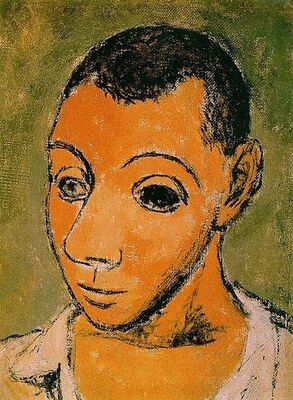Jewelry Photography
Sep 24, 2019 09:20:27 #
I have a Canon T5 that I would like to use for making small books. Any suggestions on a good macro lenses? The books will contain hand made jewelry. I intend on buying a 24”x24” light box and possibly another flash also. Your thoughts.
Thanks
Thanks
Sep 24, 2019 09:35:39 #
The EF-s 60mm f/2.8 Macro is a wonderfully sharp lens, both for macro work and as a general purpose 60mm lens. Look for a used or refurb model to save money.
Sep 24, 2019 09:36:31 #
ltom wrote:
I have a Canon T5 that I would like to use for making small books. Any suggestions on a good macro lenses? The books will contain hand made jewelry. I intend on buying a 24”x24” light box and possibly another flash also. Your thoughts.
Thanks
Thanks
Macro lenses are ALL "good" ! Working distance is what separates most of them and working distance can heavily influence lighting. I like the slight added working distance that internal focusing macro lenses give for a given focal length. Longer focal lengths will give more working distance. Several marcro lenses are now IF.
IS can be another consideration if trying to hand hold ! Not many macro lenses have IS capable.
Having the ability to use a tripod collar is yet another consideration when using a tripod for support.
Macro lenses with a small front profile (smaller "filter" size) will be less challenging for lighting the subject.
For jewelry especially, I would prefer useing continuous lighting versus flash so what you see is what you get.
.
Sep 24, 2019 10:17:34 #
Wuligal
Loc: Slippery Rock, Pa.
Will the light box have a fan in it? If so, it might cause some vibration.
Sep 24, 2019 10:23:15 #
You might also consider the EF 50mm f2.5 Macro. Inexpensive (~$200), flat field and tack sharp. If you find that you need more magnification than 1:2, the addition of the life size converter provides full 1:1 Macro at about 70mm focal length.
Sep 24, 2019 10:31:24 #
Generally speaking, you will need at least two and probably three flashes to properly light objects in a lightbox.
When I was doing jewelry photography, I would have a flash on each side and one on top of the lightbox, DIY in my case.
When I was doing jewelry photography, I would have a flash on each side and one on top of the lightbox, DIY in my case.
Sep 24, 2019 10:54:33 #
Canon's EF 100 f2.8 Macro for ~$600 (160 mm equivalent on the T5)
EF-S 60 f2.5 Macro for ~$400 (95 mm equivalent)
I would suggest a longer lens. That way you may set up a display with your lights, background, etc and still have freedom to change your subject. I would also use a static tripod so your display will remain constant without having to recalibrate your focus and lighting every time.
Also, see https://whatphotographygear.com/cameras/best-canon-macro-lenses.html
EF-S 60 f2.5 Macro for ~$400 (95 mm equivalent)
I would suggest a longer lens. That way you may set up a display with your lights, background, etc and still have freedom to change your subject. I would also use a static tripod so your display will remain constant without having to recalibrate your focus and lighting every time.
Also, see https://whatphotographygear.com/cameras/best-canon-macro-lenses.html
Sep 24, 2019 10:59:34 #
Wuligal wrote:
Will the light box have a fan in it? If so, it might cause some vibration.
Why a fan? I have had several light boxes of the size and type one might use for jewelry and none have ever had a fan as even an option.
Sep 24, 2019 12:31:10 #
ltom wrote:
The books will contain hand made jewelry. I intend on buying a 24”x24” light box and possibly another flash also. Your thoughts.
Rather than a soft box, you may want to consider a light tent. See https://bhpho.to/2lpD5CT
Sep 24, 2019 15:42:48 #
RWR
Loc: La Mesa, CA
ltom wrote:
Any suggestions on a good macro lens?
Be aware that an internal focus lens may reduce its focal length in order to focus closer, resulting in a loss of working distance (subject-to-lens distance) as compared to a non-internal focusing lens.
Sep 24, 2019 17:04:00 #
I photograph the jewelry and other highly polished objects, commercially, several times each week. .
The Canon 60mm and 100mm macro primes are good choices- I routinely use both- there are others that you may wish to consider as well. Lighting is an extremely important consideration and the choice of light sources, tools, and methods is dependent on the type of jewelry you are going to shoot. Highly polished or florentine finished metals-such a gold, silver, pewter, base metals and othere kinds of plated material, translucent precious stones, and polished opaque stones, and pieces with intricate detail, scrollwork, engraving, etc- all require specialized lighting.
Even the sharpest lenses will not yield a good aesthetically pleasing rendition of you items with good lighting technique, accurate exposure and white balance.
The most important lighting theory, in this kind o work, to study and understand and master is that of ANGLE OF INCIDENCE. The angle of incidence is equal to the angle of reflection. In practical terms, when you are photographing a highly polished item or even a mirror, you are actually taking a picture of a reflection of the light source.
My favorite light source for jewelry is a medium to large softbox equipped with a monolight type of electronic flash unit. This will provide a broad even reflection of itself in the shiny or highly-polished mirror-like material and will also reveal nice surface texture and even lighting to florentine, matte-finished and textured and detailed materials. The modeling light in this kind of strobe will provide excellent previsualization of the lighting where you can make certain that you have good reflections, no unwanted or distracting reflections and good rendition of the shape and surface of the item.
The trick is to understand the difference between LIGHT FIELD and DARK FIELD lighting. I use my shot of the coins to illustrate this point. All the coins are a combination of highly polished and more matte-finished gold and silver. Where the light is an angle to create a ligh field the coins appear metallic. Where the angle is such to create a dark field, you see the detail of the coins but the appear as black. Slightly tilting the coins to accommodate the angle of incidence makes the difference. It's all in the the relationship of the light source to the object and the object to the lens.
The basic setup here is the aforementioned lighting unit is suspended over the subject on a boom-stand and fill ligh and further light field illumination is supplied by reflectors. White reflectors will provide additional light field and silver-like reflectors will provide more spectral lighting.
Sometimes the term softbox and lightbox are confused. A softbox is a light modifier that consisting of a reflective chamber and a scrim- a diffusion panel at the front of the box. The lightbox, in this kind of work, is a kind of portable tent that some photographer pref to photograph small shiny objects. My preferred method is not sized restrictive to the items and more flexible. The reflectors can be homemade out of white matte board or Foam-Cor or Foam-Cor covered with crushed a re-expanded aluminum foil. You can go with a white, black, colored or thematic background. In effect, you are creating a lighting tent but wit more versatility that a fix box or tent. Too much tenting can cause flat lighting and oftentimes you also have to add some darkfield, such as a black ribbon ie card in the tent to give the item shape and separation from the all-white surroundings.
I recommend flash because a good mono light will provide ample light for exposure and good depth of field even at lower ISO settings, it's easily daylight color balanced for and negates any image blur due to mirror slap, vibration, or slight camera movement.
The Canon 60mm and 100mm macro primes are good choices- I routinely use both- there are others that you may wish to consider as well. Lighting is an extremely important consideration and the choice of light sources, tools, and methods is dependent on the type of jewelry you are going to shoot. Highly polished or florentine finished metals-such a gold, silver, pewter, base metals and othere kinds of plated material, translucent precious stones, and polished opaque stones, and pieces with intricate detail, scrollwork, engraving, etc- all require specialized lighting.
Even the sharpest lenses will not yield a good aesthetically pleasing rendition of you items with good lighting technique, accurate exposure and white balance.
The most important lighting theory, in this kind o work, to study and understand and master is that of ANGLE OF INCIDENCE. The angle of incidence is equal to the angle of reflection. In practical terms, when you are photographing a highly polished item or even a mirror, you are actually taking a picture of a reflection of the light source.
My favorite light source for jewelry is a medium to large softbox equipped with a monolight type of electronic flash unit. This will provide a broad even reflection of itself in the shiny or highly-polished mirror-like material and will also reveal nice surface texture and even lighting to florentine, matte-finished and textured and detailed materials. The modeling light in this kind of strobe will provide excellent previsualization of the lighting where you can make certain that you have good reflections, no unwanted or distracting reflections and good rendition of the shape and surface of the item.
The trick is to understand the difference between LIGHT FIELD and DARK FIELD lighting. I use my shot of the coins to illustrate this point. All the coins are a combination of highly polished and more matte-finished gold and silver. Where the light is an angle to create a ligh field the coins appear metallic. Where the angle is such to create a dark field, you see the detail of the coins but the appear as black. Slightly tilting the coins to accommodate the angle of incidence makes the difference. It's all in the the relationship of the light source to the object and the object to the lens.
The basic setup here is the aforementioned lighting unit is suspended over the subject on a boom-stand and fill ligh and further light field illumination is supplied by reflectors. White reflectors will provide additional light field and silver-like reflectors will provide more spectral lighting.
Sometimes the term softbox and lightbox are confused. A softbox is a light modifier that consisting of a reflective chamber and a scrim- a diffusion panel at the front of the box. The lightbox, in this kind of work, is a kind of portable tent that some photographer pref to photograph small shiny objects. My preferred method is not sized restrictive to the items and more flexible. The reflectors can be homemade out of white matte board or Foam-Cor or Foam-Cor covered with crushed a re-expanded aluminum foil. You can go with a white, black, colored or thematic background. In effect, you are creating a lighting tent but wit more versatility that a fix box or tent. Too much tenting can cause flat lighting and oftentimes you also have to add some darkfield, such as a black ribbon ie card in the tent to give the item shape and separation from the all-white surroundings.
I recommend flash because a good mono light will provide ample light for exposure and good depth of field even at lower ISO settings, it's easily daylight color balanced for and negates any image blur due to mirror slap, vibration, or slight camera movement.
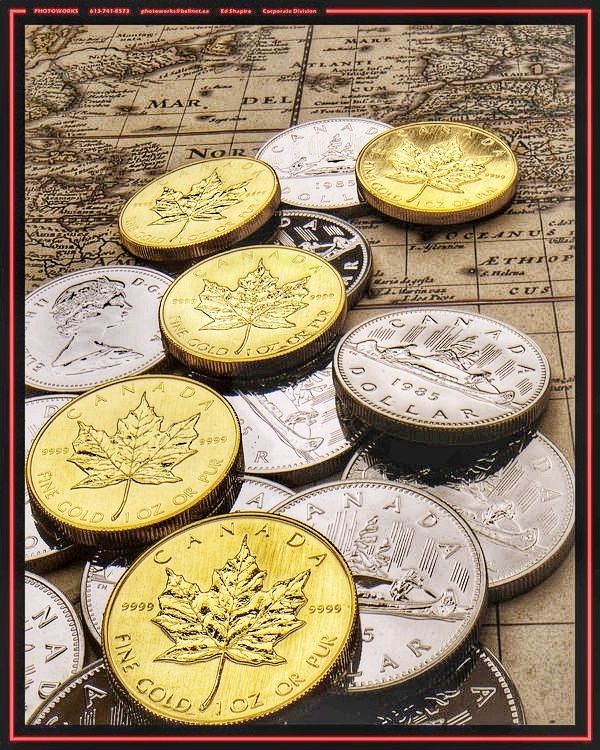

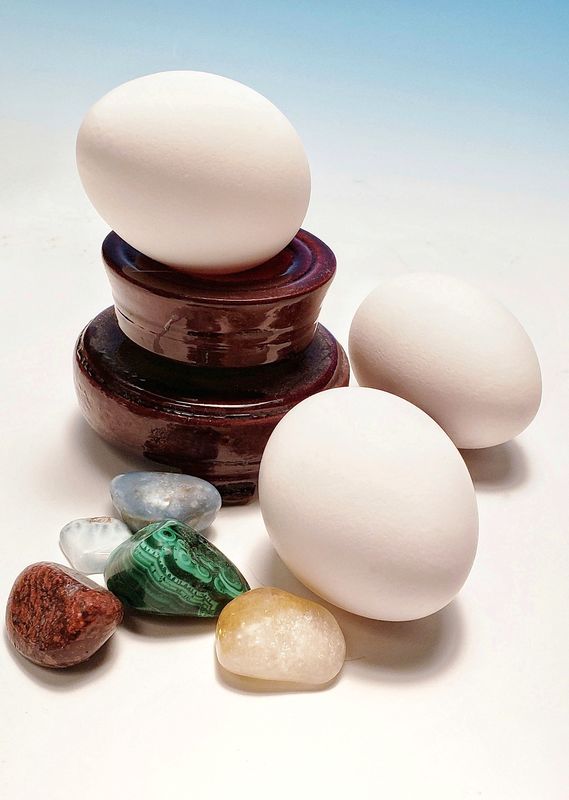
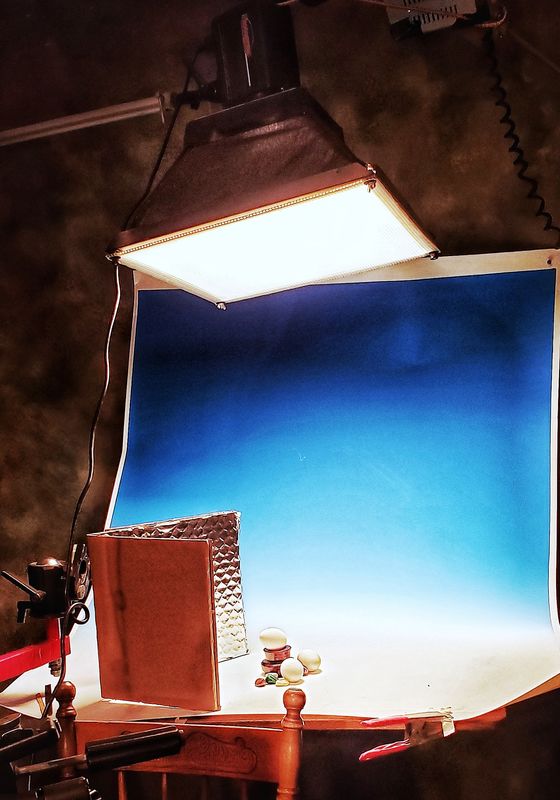
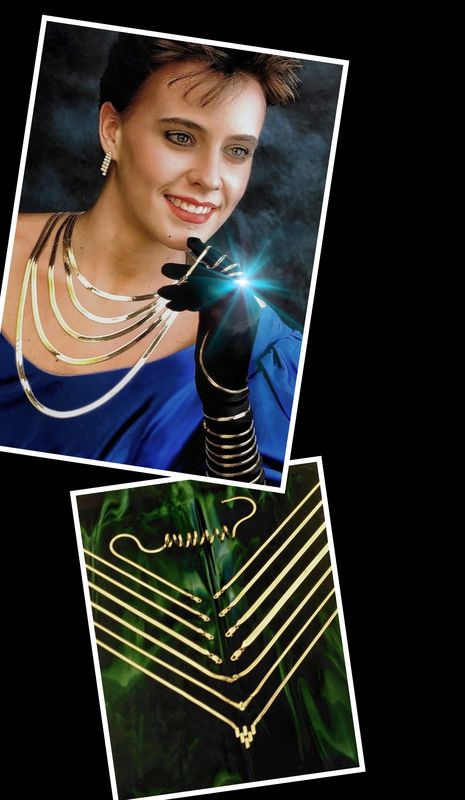
Sep 24, 2019 17:21:46 #
E.L.. Shapiro wrote:
I photograph the jewelry and other highly polished... (show quote)
Thank you for the in-depth knowledge E.L. - I’m bookmarking this for future reference.
Sep 25, 2019 05:58:03 #
I photograph jewelry that I make, and I purchased a collapsible light tent similar to this one:
www.ebay.com%2Fulk%2Fitm%2F292002451170" rel="nofollow" target="_blank">https://rover.ebay.com/rover/0/0/0?mpre=https%3A%2F%2Fwww.ebay.com%2Fulk%2Fitm%2F292002451170
I also happen to have a couple of light stands I just use GE Reveal Daylight balance bulbs, but you could also simply get the clamp on lamps at home depot and use a similar bulb. You need to position the light source so it is diffused by the tent.... trial and error, basically.
www.ebay.com%2Fulk%2Fitm%2F292002451170" rel="nofollow" target="_blank">https://rover.ebay.com/rover/0/0/0?mpre=https%3A%2F%2Fwww.ebay.com%2Fulk%2Fitm%2F292002451170
I also happen to have a couple of light stands I just use GE Reveal Daylight balance bulbs, but you could also simply get the clamp on lamps at home depot and use a similar bulb. You need to position the light source so it is diffused by the tent.... trial and error, basically.
Sep 25, 2019 07:32:52 #
billnikon
Loc: Pennsylvania/Ohio/Florida/Maui/Oregon/Vermont
ltom wrote:
I have a Canon T5 that I would like to use for making small books. Any suggestions on a good macro lenses? The books will contain hand made jewelry. I intend on buying a 24”x24” light box and possibly another flash also. Your thoughts.
Thanks
Thanks
I use a white poster board back ground lite with one circular fluorescent light placed above with a white matte placed over it.
https://www.amazon.com/Fotoconic-Fluorescent-Diffuser-Portrait-Photography/dp/B072F7WYCC/ref=sr_1_3?keywords=photographic+circular+fluorescent+light&qid=1569411119&s=gateway&sr=8-3
Sep 25, 2019 07:47:43 #
Some jewelry, especially glassy types, also responds nicely to being lit from below....translucent paper on a light box....might even use color gel sheets.
If you want to reply, then register here. Registration is free and your account is created instantly, so you can post right away.





